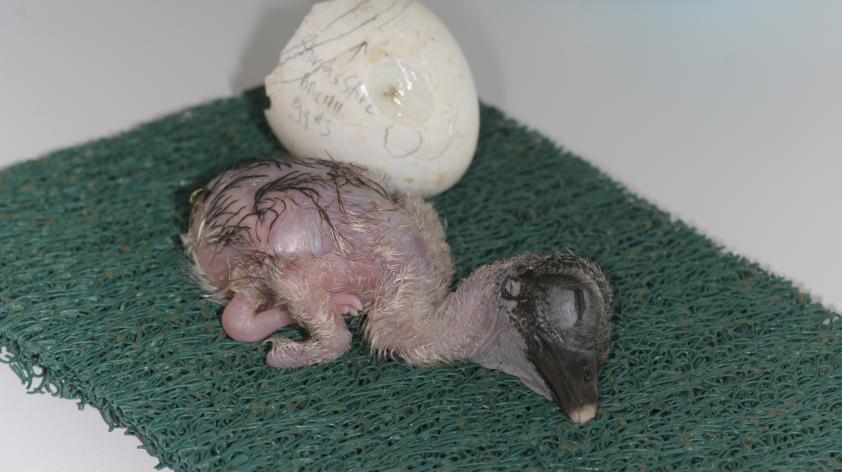
What’s inside the egg?
Sometimes the idea for a new research project comes at you, not from the scientific literature and decades of accumulated knowledge tediously gathered as a scientist but, more importantly, from the needs of another department. In this case, the San Diego Zoo Safari Park had hatched five male Storm’s storks. This might seem great, considering that this species is critically endangered with only about 400 individuals left in both captivity and the wild. However, males cannot be housed together after sexual maturity, and because we did not want to risk getting more males we stopped hatching any more eggs.
Trust me, it is always disappointing when we are not able to hatch eggs, especially if they are from critically endangered species, but even San Diego Zoo Global does not have unlimited resources, and large storks need lots of space. Our Safari Park bird curator asked if there was a way to determine if the egg contained a male or a female stork, so that we could hatch just the gender needed to keep our population balanced.
Because a bird’s gender is determined genetically, as in humans and other mammals, all we need is a small blood sample. Obviously, birds differ from mammals, but did you know that they have nucleated red blood cells and that the males have the identical sex chromosomes ZZ, while females have the heterogametic ZW chromosomes? This allows us to use a simple genetic test to detect the ZW or ZZ chromosomes, thereby determining the sex of the embryo from a 1/100 of a drop of blood, or just a few thousand red blood cells. This sounds pretty straightforward, to get a miniscule drop of blood, run a simple DNA test, and determine the sex.
Unfortunately, it’s much easier said than done. We have to collect the blood from one of the blood vessels right underneath the eggshell. The embryo uses these vessels for gas exchange, getting rid of CO2and pulling in O2, that is, breathing. It is therefore very important to minimize damage to these vessels during any procedure. The egg shell also has the vital function of keeping bacteria and fungus out, so making a hole in it increases the risk to the embryo. Suffice it to say, this technique requires sterile technique and a steady hand, or in our case, a micromanipulator, which is a mechanical robot arm that moves much more precisely than a human hand.
We developed and practiced the technique, and by the next breeding season we sexed and hatched four female Storm’s storks! As a scientist, it is satisfying, to see basic research projects integrated into daily animal management, and making a direct and tangible contribution to the conservation of endangered species. Over the last few years since we developed the technique, we have expanded to 23 species with eggs ranging in size from 1.1 grams (euphonia) to 230 grams (red crowned crane). To help other zoos, breeding facilities and conservation programs throughout the world, we teach the in ovo(egg) sexing technique in the San Diego Zoo Avian Incubation Workshop.
And that’s how my group got to help the bird department save a black and white bird that is both rarer and cuter than any other black and white animal!
Photo: A newly hatched Storm’s stork. The blood sampling hole can be seen above and to the right of the writing on the egg shell.













